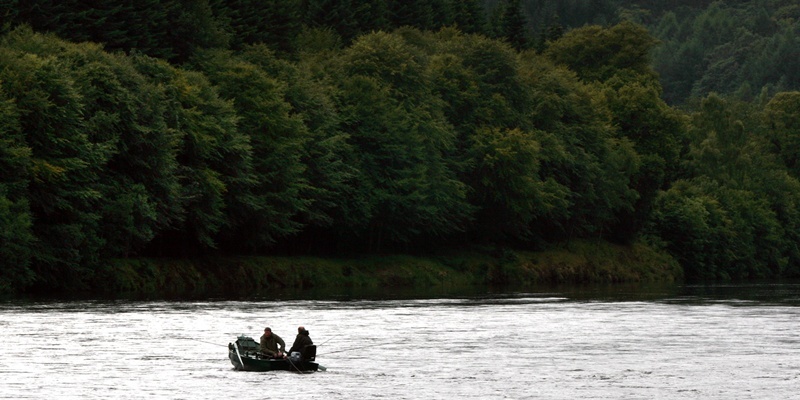Anglers on the River Tay have been urged to be vigilant after a foreign species of salmon was caught in another Scottish river.
If the humpback salmon became established in Scotland it is feared that it could threaten the future of native fish, jeopardising the £1 billion salmon industry and thousands of associated jobs.
The latest example of the ‘invader’ was caught this month in the Tweed at Paxton, Berwickshire, and the advice to anglers who catch one is to kill it rather than release it.
The humpback, or pink, salmon is native to the Pacific Ocean but was introduced to North-West Russia, spread to Norway and has made it to Scotland.
“When netting operated in the Tay, occasionally these fish were caught,” said David Stewart, fishery biologist with the Freshwater Fisheries Laboratory, Faskally.
“It is something that happens periodically. They are very unusual so there is a great deal of interest when one is caught.”
Mr Stewart said that most anglers never see a humpback salmon, but might misidentify it as a rainbow trout due to similar markings.
The latest catch was made in a net on the River Tweed and there have been at least two other unconfirmed sightings of humpbacks in the area and it also emerged that a humpback was found recently in a Kelso fishmongers, having been caught in Amble, Northumberland.
Anglers in Angus and the Mearns have also been urged to “immediately dispatch” any humpback salmon.Cross-breeding dangerEsk District Salmon Fishery Board director Hugh Campbell Adamson said: “There have not been any occurrences here, but we would certainly advise any anglers to dispatch these fish immediately and then inform the board. The danger is that they will start cross-breeding with our native species.”
Dee District Salmon Fisheries Board director Mark Bilsby likened the possible threat to the explosion in population that was seen when grey squirrels were introduced to the UK.
A Scottish Government spokeswoman said: “Freshwater fisheries should be vigilant in identifying non-native species, and raise awareness of the importance of protecting Scotland’s natural biodiversity.”
The humpback is smaller than the Scottish or Atlantic salmon, but has spread around the globe and has also been found in rivers in Canada and Iceland.
After they become sexually mature, the male of the breed develop a hump near their dorsal fin and a curved jaw.
Growing up to two feet, the fish have pink flesh quite different to the orange tinge of their Scottish counterparts.
The Russians introduced thousands to the Barents Sea 40 years ago as part of a large breeding programme.
There has been anecdotal evidence of fishermen snaring them in trawler nets off the east coast, but nothing to suggest the fish are breeding in the area.
